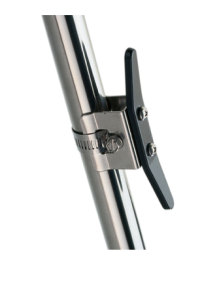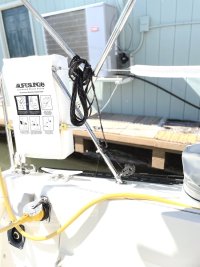Bolo. The technique is fine. No winch is ever needed and it is the quickest and sometimes the safest way to put away the headsail. I singlehand 80% of the time and have no problems doing it. In fact i am often heading downwind on approaching to the many marinas i frequent (50/50 chance). This is not to mention the fact that when when flying the kite by myself (or crewed) I have to roll up the jib after hoisting the kite and roll out the jib when dousing. Considering that some of the sailors here don't fly a kite regularly or sail in lighter conditions, this fact might elude them.
Guest viewing is limited
- You have a limited number of page views remaining
- 25 guest views remaining
- Register now to remove this limitation
You are using an out of date browser. It may not display this or other websites correctly.
You should upgrade or use an alternative browser.
You should upgrade or use an alternative browser.
Winching in a headsail
- Thread starter Bepi
- Start date
Bolo
Contributing Partner
Grant - About 18 years ago, when I owned a Hunter 285 and knew less about sailing, I used my winch about two or three times to pull in the head sail. Even back then this didn’t seem right because I observed the stresses that were being placed on the furler and associated rigging so I stopped doing it and resorted to ”manhandling“ (Am I still allowed to use that word these days?) the head sail in during a big blow which did result in some sail damage. It was later, just after I took possession of my E32-3 when I read an article about turning downwind (Again, where possible) to make it easier to roll in the furler and lessen the chances of damage to the sail in high winds. Everyone has their ”style” of sailing and I am not about to criticize what they do if it works for them. My style is to use common sense and what works for me after educating myself on a sailing technique and some trial and error. I also use a boom brake, which some sailors also frown on, to help reduce accidental jibes an lessen “shock” to the rigging in strong winds but it’s worked for me.Bolo. The technique is fine. No winch is ever needed and it is the quickest and sometimes the safest way to put away the headsail. I singlehand 80% of the time and have no problems doing it. In fact i am often heading downwind on approaching to the many marinas i frequent (50/50 chance). This is not to mention the fact that when when flying the kite by myself (or crewed) I have to roll up the jib after hoisting the kite and roll out the jib when dousing. Considering that some of the sailors here don't fly a kite regularly or sail in lighter conditions, this fact might elude them.
Yup. I have a small Harken ratcheting swivel block, made to be mounted on the stern rail tubing. This leads to a small horn cleat mounted on the same rail tubing.I use a ratcheting block, a relatively new style block that eliminates the sheet being pulled through your hands. Much better control.
Bolo
Contributing Partner
Just watched a couple of videos about ratcheting blocks and found it interesting and probably a new addition to the rigging on my boat. Thanks!I use a ratcheting block, a relatively new style block that eliminates the sheet being pulled through your hands. Much better control.
Does the stern rail tubing seem to hold up to the the doubled load of a turning block OK?Yup. I have a small Harken ratcheting swivel block, made to be mounted on the stern rail tubing. This leads to a small horn cleat mounted on the same rail tubing.
Yes. That 1" SS tubing base is thru bolted to backing plates when the boat was built @ EY. You can use the base of the rail for a mooring point, if needed.Does the stern rail tubing seem to hold up to the the doubled load of a turning block OK?
Note that the load on the furling line is light duty. The change in load 'vector' is less than 90 degrees. The swivel block is mounted very low on the tubing, too.
Link picture, with the turning block just visible at upper left. the little cleat is mounted just above it
O34 - Seat Hatch, Finished Photos
These show the even (!) alignment on all sides and the improved view of the engine instruments. Also some views of the new continuous ss hinge. Loren
Last edited:
Rhett_m
Member I
^^ 100%Excellent Advice! A few years ago I labored to roll in a flapping small jib, still holding course to windward. Furler jammed and by the time we got the sail in, it was damaged and needed repair. In the aftermath I also replaced the old Harken with a new Mk 4.
I could have - maybe - got another year out of the furler and never harmed the jib at all IF I had done what Bob suggests.
I always turn into a broad reach before furling up the headsail. Absolutely saves your sail from getting beat up from flagging, and makes it easier to furl.


